September, 26th 2008, we sailed with our diving ship the Dolphin for a diving trip to the steamship Wilhelmina in the North Sea. A long trip from the Roompot in Zeeland. After leaving at half past four in the morning we reached the wreck after about six hours of sailing. The steamship lies at a depth of about 45 metres. Our team dives with nitrox, trimix and rebreathers. I myself dived with my Inspiration classic with a diluent 20/25 and an EAN 30 in the bailout bottle. My buddy Rita dived with the same configuration, but with the APD Vision. We had planned a descent + bottom time (DT) of 30 minutes.

At the bottom of the anchor line laid by our sacrificial divers, we found a truly magnificent wreck with visibility of up to 10 metres. The steamship with paddle drive lies slightly rotated around its longitudinal axis. The middle of the ship, where the steam engine is, is completely open and the impressive parts are clearly visible. Rita and I swam on to the stern where the first class cabins once stood. There in the sand next to the ship I saw two small pieces of metal sticking out of the sand. When I pulled them out, I had my fork with which this story began. The silver fork had an indistinctive strike on the front and back. Any wreck diver would get the jitters and want to know exactly what the inscriptions meant. Back home after a successful second dive, I searched the internet for more information on the Wilhelmina. It soon became clear that little is known about this ship. Fortunately, I found a link to a book describing one hundred years of sailing in England. The book was published on the occasion of the 100th anniversary of the Stoomvaart Maatschappij Zeeland. Below the history of the steamer “Queen Wilhelmina”.

The history of the Stoomvaart Maatschappij Zeeland (further referred to as SMZ or “Zeeland”) goes back to 1650 when Amsterdam opened direct negotiations with the Republic of England to establish a postal connection with the Netherlands. This was followed by 200 years of negotiations with various parties from Amsterdam, Zeeland and Belgium until the “Reederij Stoomvaart Vlissingen-England” was founded in October 1874 under the chairmanship of Prince Hendrik der Nederlanden (1820-1879).


Courtesy Maritiem Museum ‘Prins Hendrik’ Rotterdam
The shipping company commissioned two ships for the service, namely the ‘stad Vlissingen’ and the ‘stad Middelburg’. Subsequently, on 10 June 1875, the Stoomvaart Maatschappij Zeeland was established. The purpose of the ships was to deliver goods between the Netherlands and England on a regular basis. When the SMZ was founded, a third ship, the “Stad Breda” was added to the fleet. In England, the ships called at the Queenborough pier, which burned completely twice. Because of this, other ports in England were also visited. In 1876, the English government briefly granted permission to import cattle into England, but shortly afterwards this permission was withdrawn again due to the outbreak of cattle plague in Germany. The ships at that time carried passengers, mail but also goods from Germany such as silk, wool and cotton goods. From the Netherlands they usually carried butter, cheese, fish and poultry. In 1876 the first postal agreement with the State was made. The successful service soon ordered two new ships equipped with an oscillating compound steam engine the “Princess Marie” and the “Princess Elisabeth” which entered service in 1878.


In 1880 the “Prins Hendrik” followed and the “Stad Middelburg” was modernised and renamed the “Aurora”. In 1883, thanks to an advance payment from the State Railways, another ship could be ordered from the Scottish shipyard John Elder & Co in Glasgow. The “Willem Prins van Oranje” was put into service in 1883. In 1885 another three boats were ordered from the same shipyard with a loan of 2 million. With these three new boats, the “England”, the “Germany” and the “Netherlands”, the day service at Queenborough was opened in 1887. These three new radar boats were the first vessels with a steel hull. Finally, in 1894, the Fairfield Shipbuilding Company, the new name for the former shipyard John Elder & Co, was able to order the construction of three new ships, the “Koningin Wilhelmina”, the “Koningin Regentes” and “Prins Hendrik”.


These ships were the first Zeelands vessels to be equipped with a triple expansion diagonal compound steam engine that could develop a power of 9000 hp! More than double of the previous older boats. The ships had accommodation for 244 passengers divided over 180 first class and 64 second class. The interior surpassed anything ever seen on board a canal boat before! The ships sailed at a speed of 19 ½ nautical miles per hour (almost 36 km per hour!).


The safety of the crossing was improved by installing underwater signalling devices on light ships along the route. Also, a submarine clock was installed on the pier in Vlissingen, which facilitated sailing in fog. These safety measures brought the line much publicity and passengers. Because of this and because of new postal contracts, three more ships could be ordered from Fairfield. These ships were the first twin-screw ships of the SMZ. They sailed 22.5 nautical miles. Also in those days this order caused a lot of commotion because the order was not placed in the Netherlands. The three new ships “Prinses Juliana” the “Oranje Nassau” and “Mecklenburg” entered the nightshift in 1910. The three paddle steamers were rebuilt for the day service.

When the First World War broke out in 1914 following the murder of Franz Ferdinand and his consort in Sarajewo, the Zeeland (SMZ) fleet consisted of three double screw boats for the night shift shift shifted to Folkstone and three Raderboats for the day shift shifted to Queenborough. The Raderboot “Duitschland” was used as a reserve ship.

The coastal lights were extinguished and a protective minefield was laid in the Scheldt. Funerals could only take place with a military pilot. The timetable was extremely difficult to maintain due to irregular supply of passengers and supplies. Eventually, the night shifts had to be discontinued. The ships were regularly stopped by English patrol ships. During the entire month of August 1914 many extra sailings had to be made due to the large supply of passengers from Europe. On September 26 the “Mecklenburg” was put at the disposal of the Dutch government to take the survivors of the British armoured cruiser “Aboukir”, “Hogue” and “Cressy”, which had been torpedoed on September 22 in the North Sea off Vlissingen, back to their homeland. In the meantime both the Germans and the British had laid more and more minefields and the course had to be repeatedly changed.
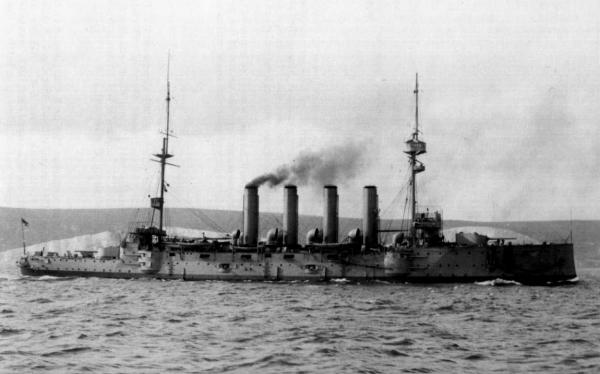


For safety reasons, the number of passengers was reduced during the war years. At the end of the war year it was established that a record number of 200582 passengers had been carried on 652 voyages.
In July 1915, the ss Prinses Juliana was damaged on the river Thames off Tilbury by a German Zeppelin that was attacking London. Six bombs were dropped, five of which exploded near the ship and caused some damage.
The increase in the number of sea mines caused major delays in sailing. First, the shipping lane had to be swept with minesweepers before the ship could sail. However, it was always emphasised that the postal contract with the State of the Netherlands implied that the ship had to sail under all circumstances.
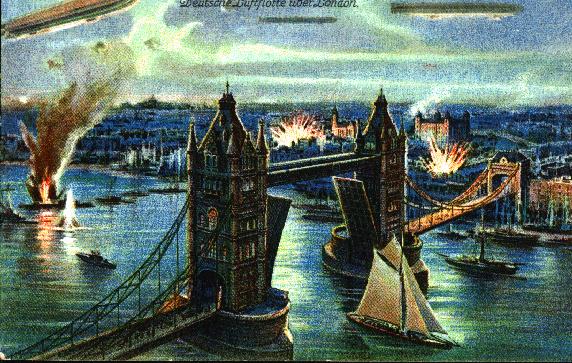
On 1 January 1916 the “Princess Juliana” with captain A. Buskop, on her way from Flushing to the Thames, sunk on a German submarine mine UC5 southwest of the lightship and was seriously damaged. Buskop still managed to put the ship on the shore near Felixtowe, after which the ship was wrecked the next day due to a storm. All passengers and crew were saved.
Shortly afterwards, on 27 February 1916, the “Mecklenburg” hit a mine near the lightship Galloper. Fortunately, the ship remained afloat after the explosion and all those on board were rescued. There were 49 passengers and 65 crew members on board. The survivors were taken to England and later brought back to the Netherlands on the Tubantia. Less than two weeks later, the Tubantia sank itself!

The service came to a temporary halt after the loss of these two ships, but was resumed in March 1916.
In mid-June, the English minefield in the southern part of the North Sea was extended northwards. This meant that the lightships “Noordhinder” and “Schouwenbank” had to be moved. This also meant that the route had to be shifted again, which increased the length considerably and meant an increase in the dangers at sea.

On 31 July 1916, the SMZ was once again startled by the loss of one of its ships. This time it was the ss “Koningin Wilhelmina” the main protagonist of this story. The “Koningin Wilhelmina” with Captain Reedeker ran into a German mine approximately 2 ½ miles from the lightship Noord hinder. Since the resumption of service, the holds had been filled with empty barrels. It was hoped that this would give the ship greater buoyancy, so that she would stay afloat longer in the event of a mine explosion. This proved to be the case; the Koningin Wilhelmina remained afloat for approximately 40 minutes, making it possible to preserve the registered mail. Unfortunately, five of the crew were killed during the sinking and two of the three injured died a day later in Flushing. The names of the victims were P.G. Hollebrands (3rd engineer), P. Palmkoek, M. Nieuwenhuize and A. Abrahamse (stokers) and J.P. de Vries (donkeyman). Four more members of the crew were injured. All other persons on board, 46 of the 49 passengers and 48 of the 52 crew, boarded six sloops in perfect order; they were taken on board the lightship “Noord-Hinder” where they were cared for. Later in the afternoon two G-torpedo boats brought them back to Flushing.


The “Koningin Wilhelmina” hit the mine that was supposed to have been laid on 18-3-1916 by the UC-1, but it is more likely that the mine was laid by SMS B.111. The UC-1, a mine-laying submarine, was built at the Vulkan shipyard in Germany. The UC1 – UC10 series was built in 1915. The UC-8 had a very special history. This mine-laying submarine was taken into service by the Dutch Navy after the war as the M1.

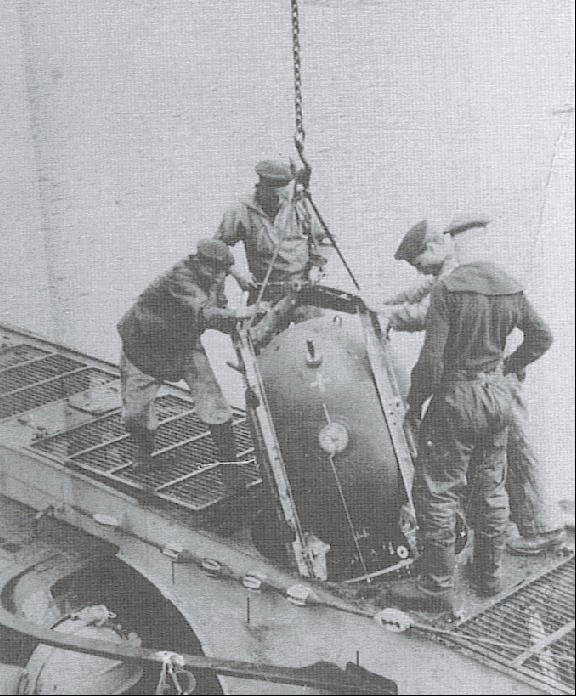

After the sinking of the Wilhelmina, the service was stopped but resumed in August after long deliberation. After the disaster, several boats of the company were brought to Belgium, but returned later.
In 1917 the Regentes was most probably torpedoed by the UB 107.

With the declaration of the ‘unrestricted submarine war’ by Germany, regular sailings ceased from 1 February 1917. From 31 January 1919 the service was resumed, initially to Gravesend, later again to Folkestone.
On 1 June 1922 the night service at Folkestone was changed into a day service. With this the emphasis came more on the tourist traffic. The Grand Hotel des Bains in Vlissingen was taken over by the SMZ and after modernisation operated as Grand Hotel Britannia until 1940. Britannia was completely destroyed in 1944 during acts of war. The Municipality of Vlissingen and the KMS had the restaurant and function rooms rebuilt in 1954 with Marshall’s aid, and rebuilding the hotel section followed in 1960.
On 4 September 1939 the service was discontinued because the port of Harwich was closed. Ten days later the service was resumed at Tilbury. Because of the increasing threat of war this service was also stopped on 25 November 1939. In May 1940 the ships were able to escape the German invasion. The office building at the Vlissingse Buitenhaven was partially destroyed in an air raid on 11 May 1940. Six months later, the remaining part was destroyed by a bomb. The workshops at the Binnenhaven were also destroyed during the war.
Of the five ships, one was lost and the other four went into Allied service. The new Queen Emma and Princess Beatrix were converted to assault ships and used as HMS Queen Emma and HMS Princess Beatrix for Allied commando raids on enemy targets worldwide. After the ships were released in 1945, they were first used by the Dutch government between England and Rotterdam. Only in the course of 1946 did the remaining ships become available again to the SMZ. They first had to be repaired and refitted for passenger transport.
Hook of Holland (1946-1989)
In the last 44 years of its existence, the SMZ maintained the ferry service from Hook of Holland. Resuming the service from Vlissingen was impossible due to the extensive destruction of harbours, offices and railway connections. Because the SMZ had been sailing from Flushing to Harwich since 1927, from where the English railways maintained a connection to Hook of Holland, the SMZ focused on this port. The first completed ship was leased to the London & North Eastern Railway (L&NER) who put it into service on 29 July 1946 on the Hook of Holland-Harwich line. The other ships were completed in the following years, so that the SMZ could only provide a daily service from 1948.
In the meantime the SMZ had moved the office on April 1, 1946 to a temporary space in the buildings of Wm. H. Müller & Co on the Jobshaven in Rotterdam. In the beginning of 1947, the SMZ finally chose Hoek van Holland, despite the objections of the Dutch government. In July 1947, the office was moved from the temporary accommodation in Rotterdam to Hoek van Holland.
In order to accommodate the Zeeland interests a midweek tourist service between Vlissingen and Folkestone was operated by the Mecklenburg in the summer seasons between 1949 and 1952, but this was not a success. However, the workshops at Flushing’s outer harbour were rebuilt in 1950 and put into operation in March 1951, so that periodic maintenance work could be carried out in-house. SMZ vessels could still be seen regularly in Flushing harbour and some fifty Zeelanders were still employed by the SMZ. The reserve ships were also laid up here. After the last reserve ship Koningin Wilhelmina was sold to Greece at the end of 1978 the workshops were closed. In March 1985 they were scrapped.
From 1952 the SMZ operated the Hook of Holland-Harwich service in a pool agreement with British Rail. In August 1953 the Minister of Waterways and Public Works decided that Hook of Holland was a better port of departure, much to the disappointment of the Municipality of Vlissingen and the Province of Zeeland. In 1968, the SMZ and British Railways brought new ships into service, further integrating the service. A few years later, the British Railways ferry services were combined under the name Sealink, a name that was also applied to the SMZ ships. From the introduction of the last SMZ-ship Queen Beatrix in April 1986 the SMZ operated its share of the service under the name “Hoek-Harwich”, from December 1988 under the name “Crown Line”. This proved to be of short duration.
End (1989)

Tot zover een deel van de geschiedenis van de Wilhelmina en de SMZ. Hieronder zie je nog een paar vondsten van de Koningin Wilhelmina.







The following pictures are sent to me by Mr. Arthur Scheijde. He is related to a family member of the captain of this Ship!




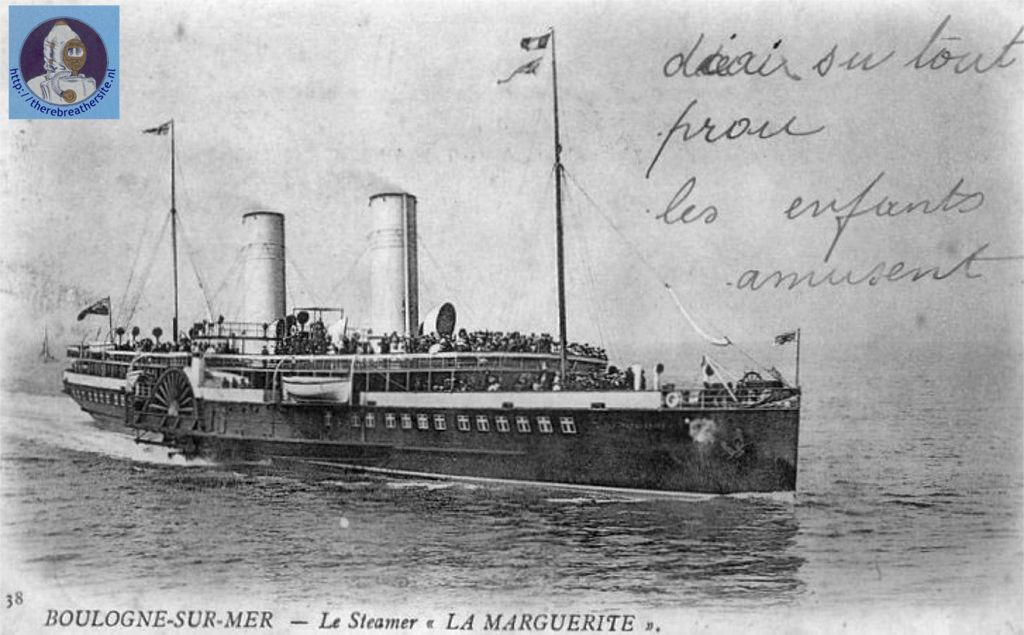
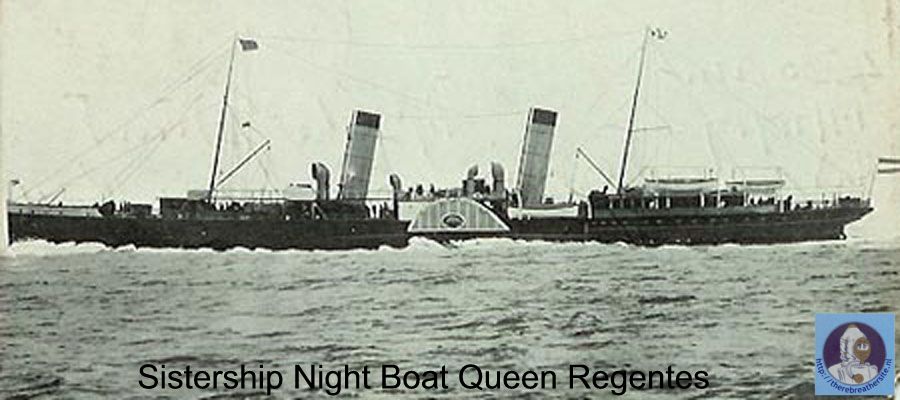
Mr Scheijde made a 3D impression of the Wilhelmina. What a great picture!!
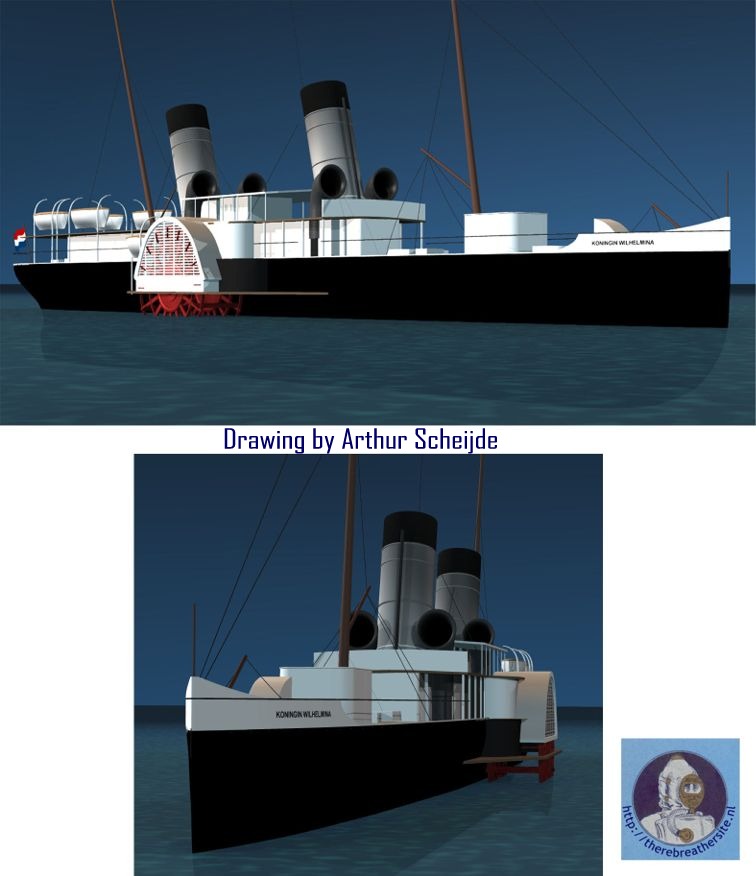




In November 2009 I was contacted by Mr. Gerard Nieuwenhuize. His great-grandfather was one of the victims of the Wilhelmina. He kindly offered me some unique documents to add to this page. I would like to thank Mr. Nieuwenhuize for his interest and lind permission!







The next article was written by Vic Verlinden. Vic Verlinden made the pictures and wrote the article. Publication was permitted by Vic Verlinden and the redaction of the diving magazine DUIKEN. I would like to thank both Duiken en Vic Verlinden for there appreciated permission.


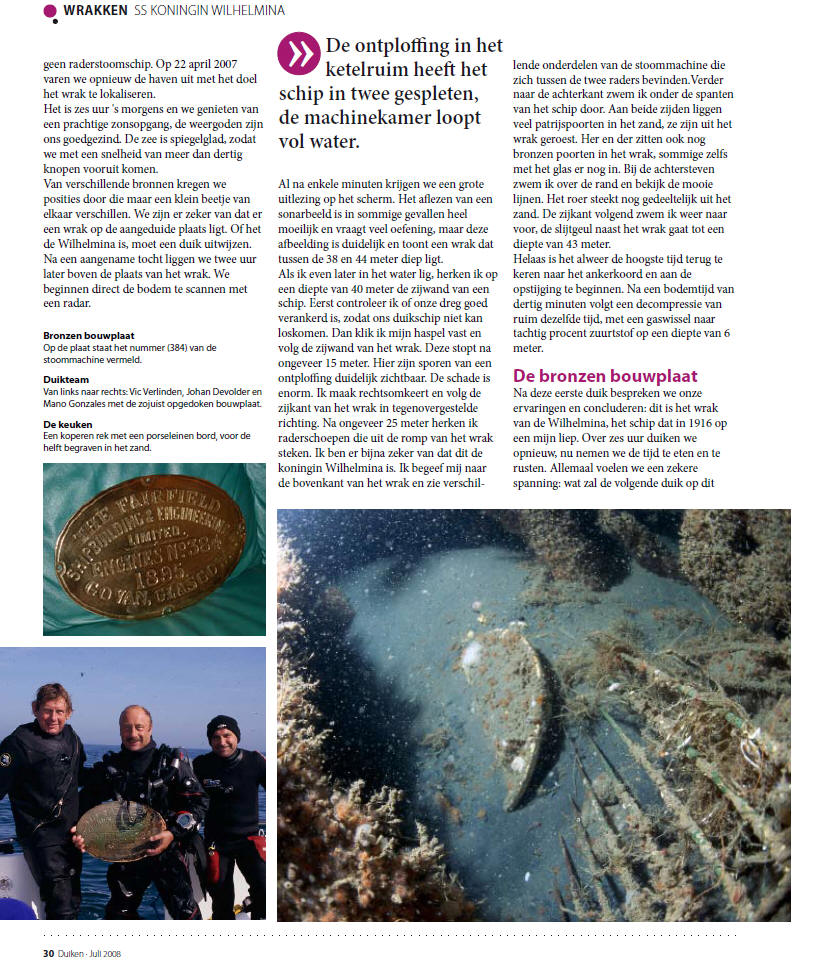

The next picture was send by Gerard Nieuwenhuize
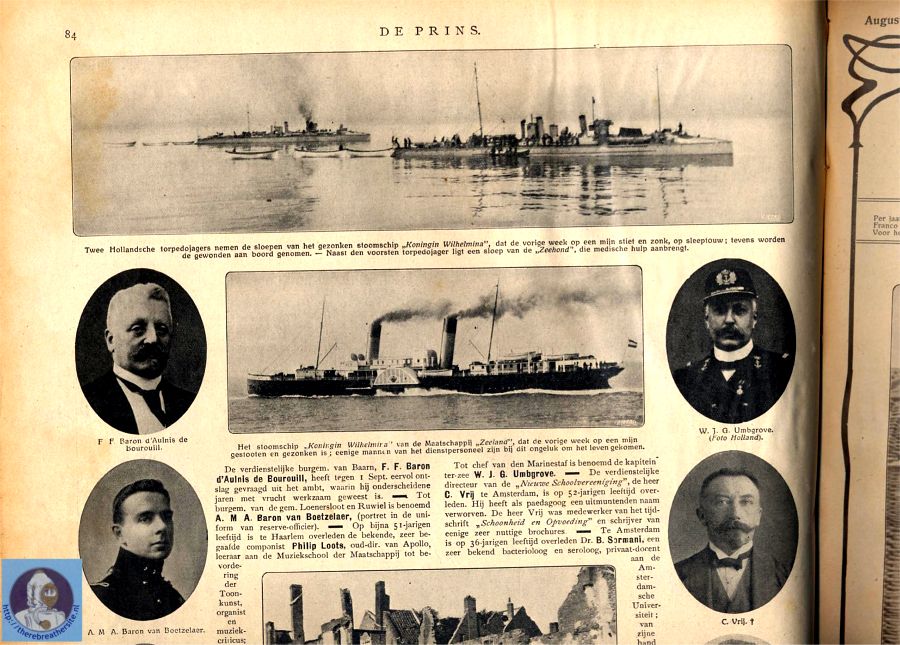
Sources:
“Honderd jaar Engelandvaart” Stoomvaart maatschappij Zeeland 1875 – 1975 dr. E.A. ten Brink
Internet sources:
The Royal Institution of Naval Architects
Koninklijk Instituut van Ingenieurs
Museum Prins Hendrik Rotterdam
Thanks to:
Martin Bakker schipper MS Dolfijn
Buddy Rita Oosterbaan
Wouter Groenewegen
Arjan de Ruiter
Special thanks to Mr. Arthur Scheijde for the impressive pictures he sent to me !
Special thanks to Mr. Gerard Nieuwenhuize for the impressive documents and photo he sent to me !

Therebreathersite was founded by Jan Willem Bech in 1999. After a diving career of many years, he decided to start technical diving in 1999. He immediately noticed that at that time there was almost no website that contained the history of closed breathing systems. The start for the website led to a huge collection that offered about 1,300 pages of information until 2019. In 2019, a fresh start was made with the website now freely available online for everyone. Therebreathersite is a source of information for divers, researchers, technicians and students. I hope you enjoy browsing the content!
